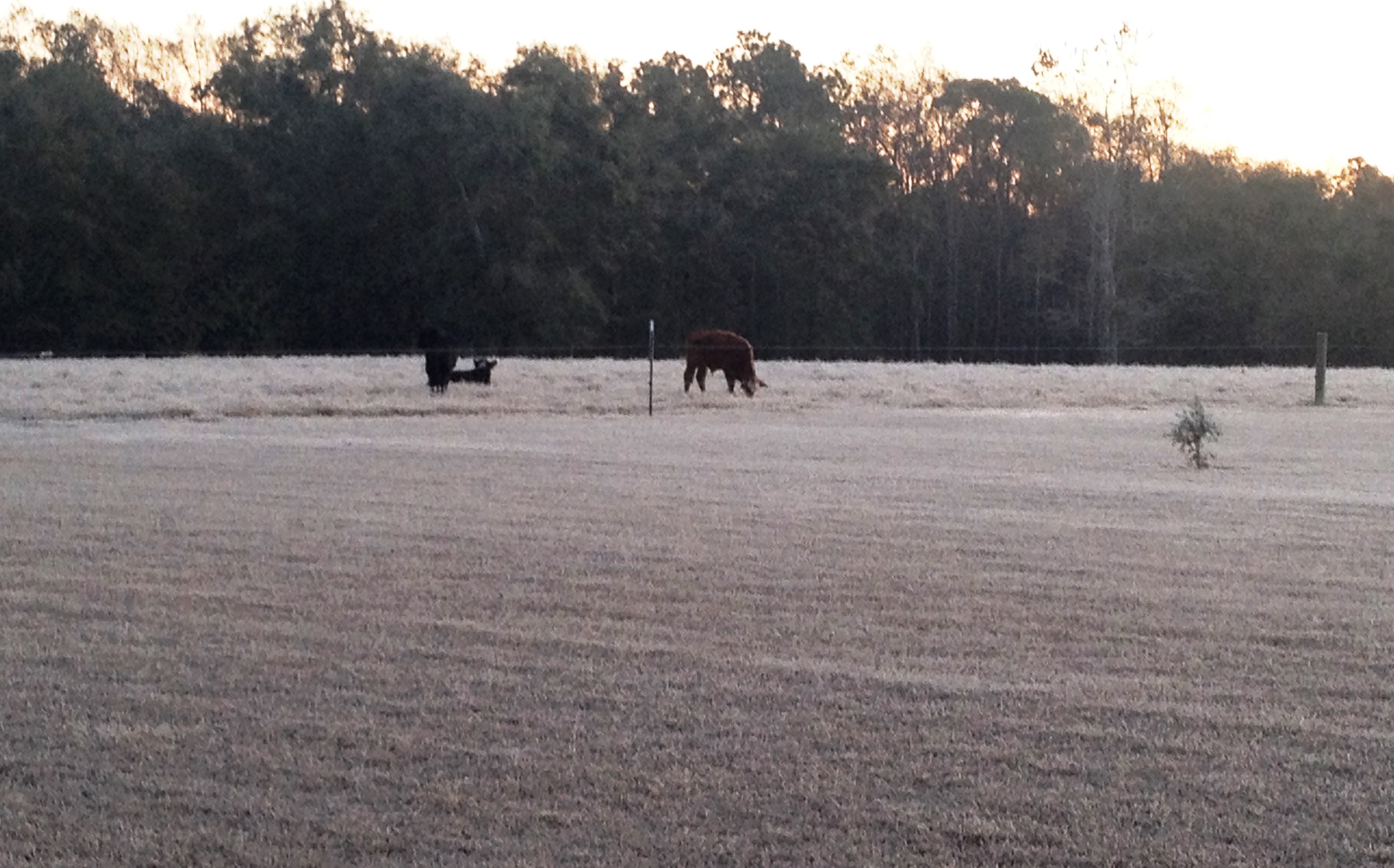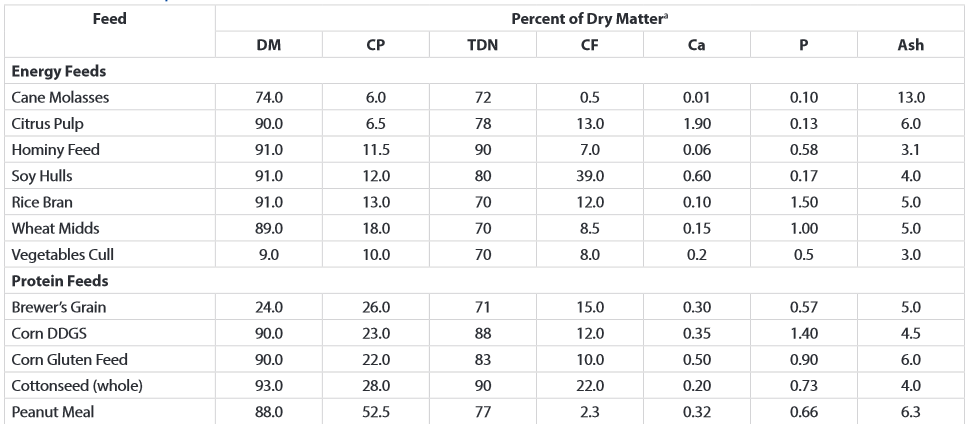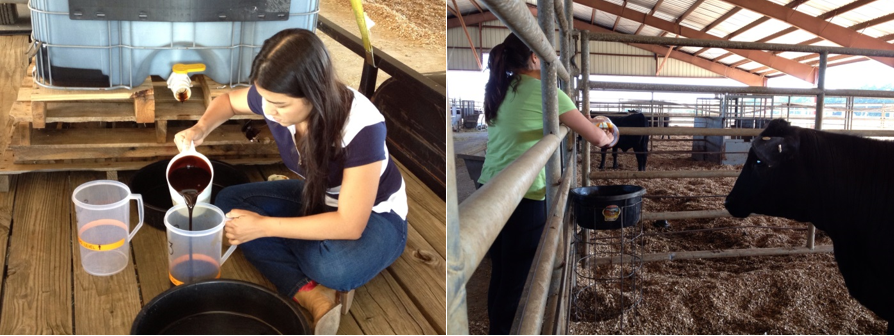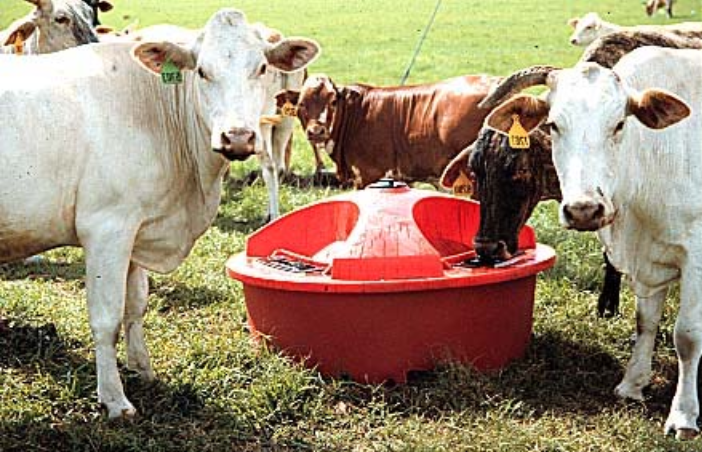
The frosty cold mornings of the past few days help remind us about the importance of supplementing our cattle with high-energy winter feeds. Photo by Ralph Yoder
Nicolas DiLorenzo, State Beef Specialist, University of Florida NFREC
There’s nothing like the cold mornings of the past two days to remind us about the importance of supplementing our cattle herds with high-energy feeds to help them maintain their body temperature. The thermoneutral zone is defined as the range of temperatures in which cattle are comfortable and do not need to spend energy to either cool down or increase body temperatures. For beef cows in our area, that range is typically (although variable with breed, acclimation and hair coat) between 25° and 86° F, but young calves can experience cold stress in temperatures as high as 50° F. When extreme weather conditions push beef cattle out of their thermoneutral zone, they need to spend extra energy to maintain their body temperature, and that energy is driven away from productive processes, such as milk production, or body reserves restoration. Thus, the few hours of temperatures in the low 20’s that we experienced in the Panhandle in the last two days, certainly increased the intake and energy expenditure of cows, and served as a reminder of the importance of energy supplements for cattle during the winter.
One of the often underutilized feeding strategies during winter supplementation in Florida is the use of liquid feeds, such as molasses or crude glycerol as a high-energy, winter supplement. Florida sugarcane production provides a great supply of byproduct molasses for cattle feeding. Molasses has been used as supplement for low quality forages for several years, especially in central and southern Florida. The increasing production of biodiesel in the U.S. has increased the availability of crude glycerol, another liquid byproduct with great potential for cattle supplementation. One of the challenges with these feeds is that if offered free-choice, cattle tend to over consume it, causing two problems: 1)increased costs for cattle supplementation; and 2) decreased forage intake, which should be the majority of their ration, either in the form of hay or winter grazing. Supplementing mixtures of glycerol and molasses may help mitigate the some of the negative effects of supplementing large quantities of each of them alone. The University of Florida’s North Florida Research and Education Center has been conducting experiments to test the use of combinations of glycerol and molasses as a supplement for beef cattle consuming hay. Preliminary results show that a mixture of 50% molasses/ 50% crude glycerol fed at 3 to 5 pounds per head, per day, can enhance productivity without any negative effects on fiber digestion.
The liquid feed industry has made significant advances in the development of compounds (salts, acids) or devices (lick wheel, etc.) that can successfully regulate the daily intake of liquid feeds when offered free-choice. Combining intake-limiting technology with the research generated to determine optimum amounts to be supplemented may create very appealing alternatives in the near future for winter feeding strategies in the Panhandle.
Nutrient Composition of Alternative Feeds

Source: AN128 Alternative Feeds for Beef Cattle R. O. Myer and Matt Hersom
For more information on liquid feeds supplementation, consult:
- 2025 Florida Bull Test Sale – January 18 - January 10, 2025
- Intake Limiters:Old Technology for Modern Beef Cattle Supplementation - September 20, 2024
- Cashew Nutshell Extract: A Feed Additive with Potential to Reduce Methane Emissions from Cattle - March 22, 2024


